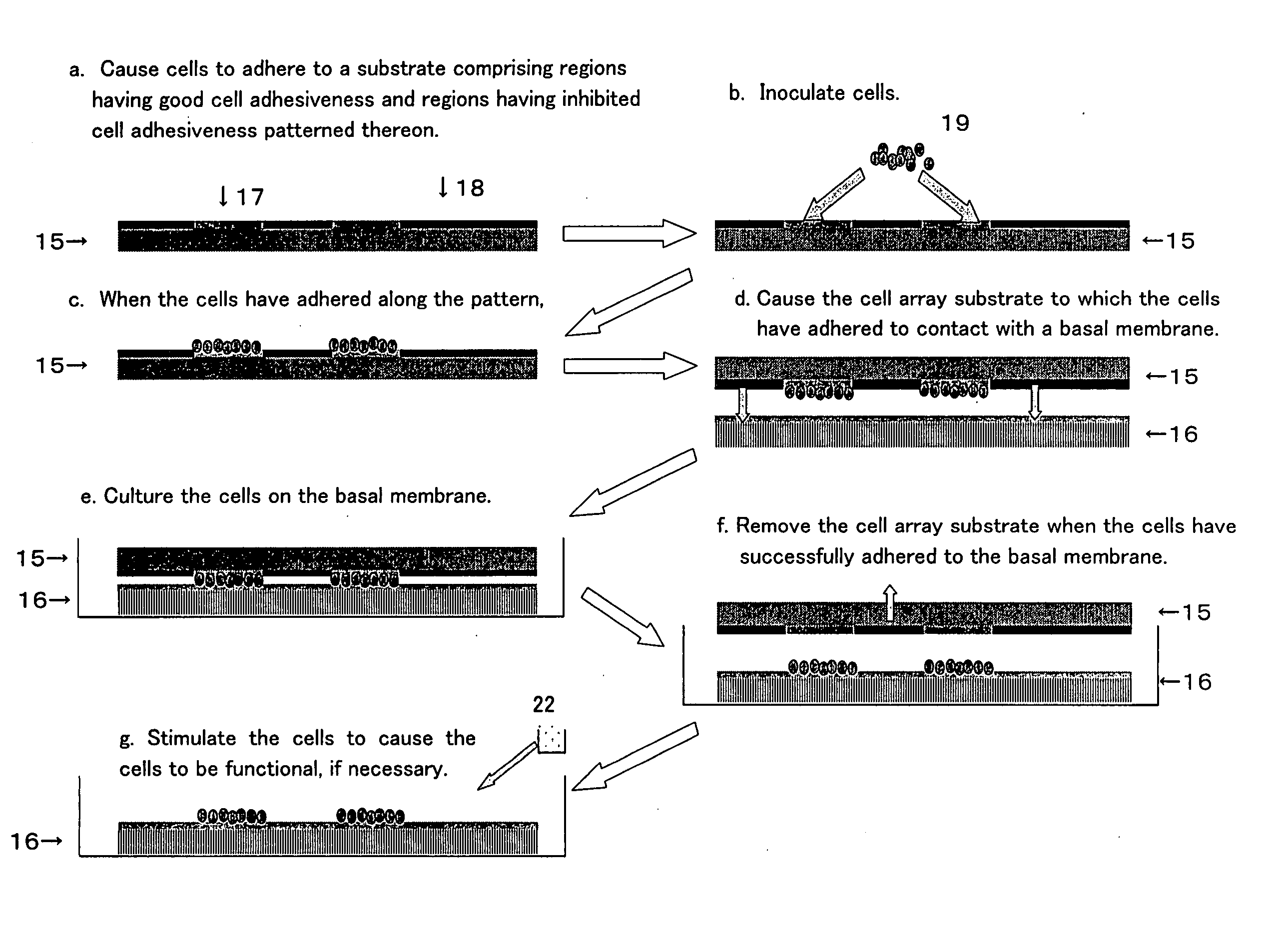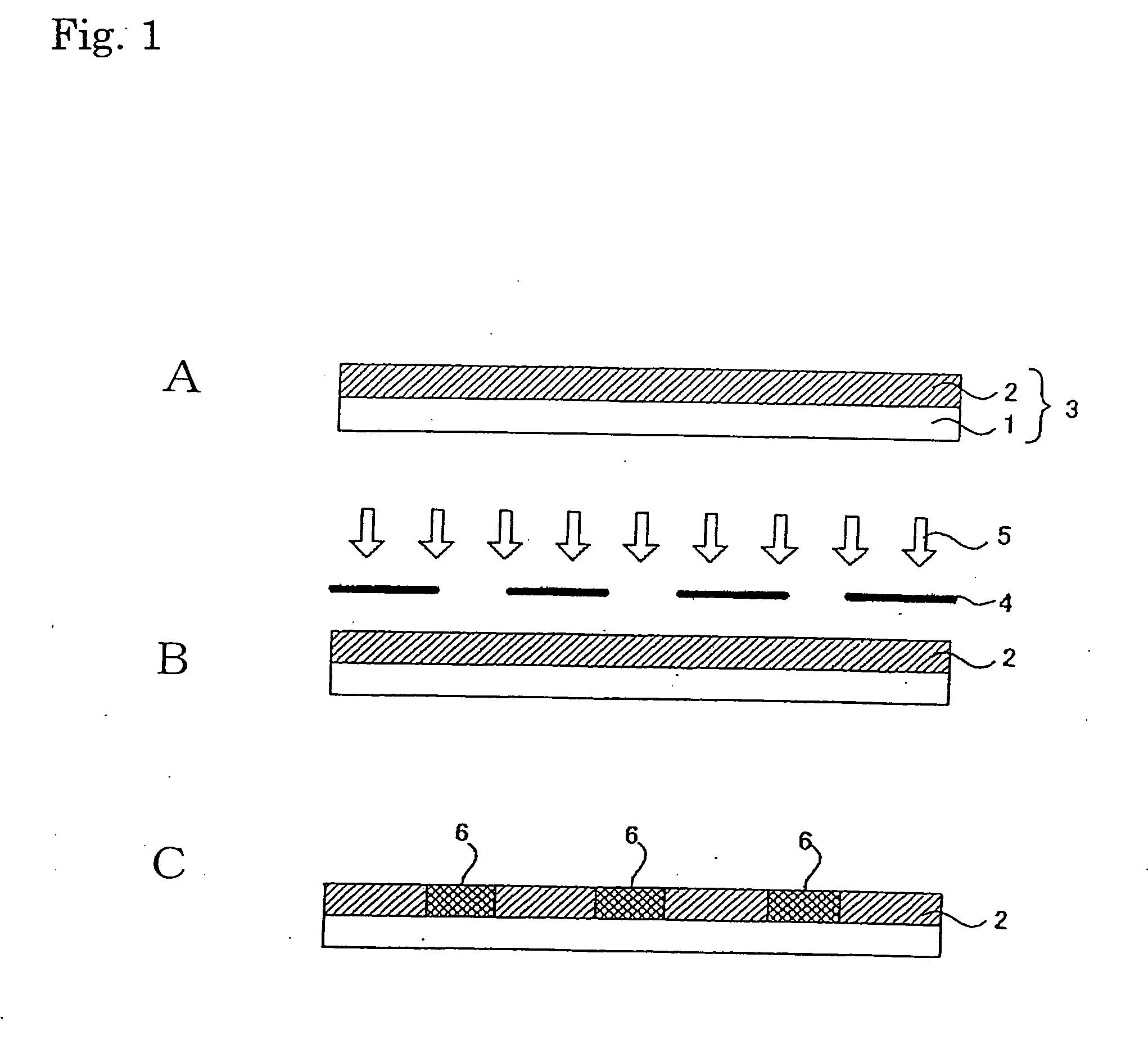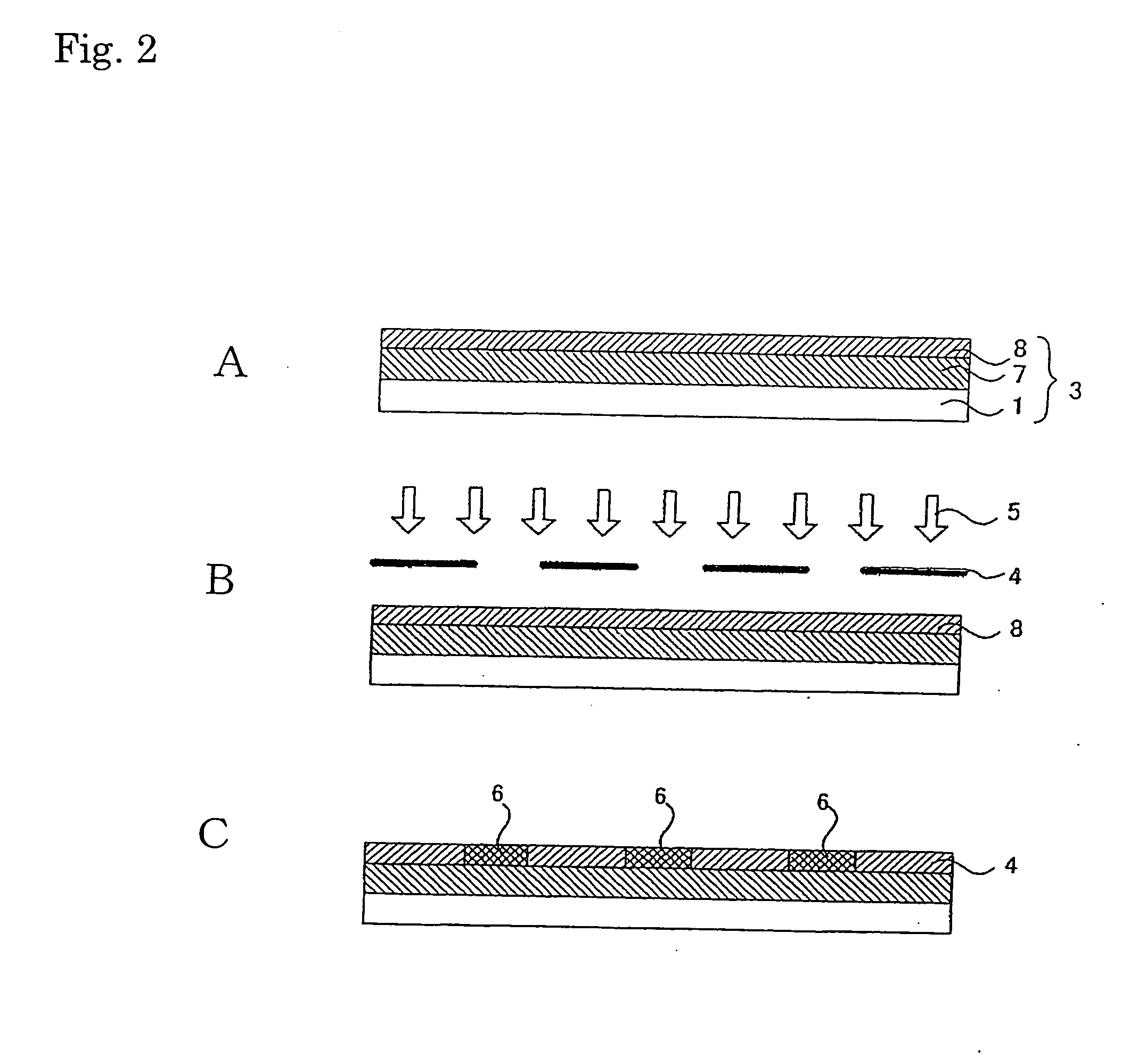Artificial Tissue Construct and Method for Producing the Same
a technology of artificial tissue and constructs, which is applied in the field of tissue constructs, can solve the problems of long time period, high possibility of contamination, and animal cells that cannot survive,
- Summary
- Abstract
- Description
- Claims
- Application Information
AI Technical Summary
Benefits of technology
Problems solved by technology
Method used
Image
Examples
example 1
Preparation a Cell Array Substrate
[0282] 1.5 g of fluoroalkyl silane TSL8233 (GE Toshiba Silicones), 5.0 g of tetramethoxysilane TSL8114 (GE Toshiba Silicones), and 2.4 g of 5.0×10−3N HCl were mixed for 12 hours and then diluted 10-fold with isopropyl alcohol.
[0283] Next, 2.0 g of the solution was applied to a 10 cm×10 cm soda glass substrate using a spin coater at 1000 rpm for 5 seconds. The substrate was dried at 150° C. for 10 minutes.
[0284] Next, 3.0 g a titanium oxide sol solution (ISHIHARA SANGYO KAISHA, LTD. STK-03) diluted 3-fold with isopropyl alcohol was used as a composition for a photocatalyst-comprising layer.
[0285] The above composition for a photocatalyst-comprising layer was applied to the patterned surface (on which line portions each having a width of 60 μm and space portions each having a width of 400 μm had been arranged alternately) of a line & space negative photomask (quartz) using a spin coater at 700 rpm for 3 seconds, followed by 10 minutes of drying tr...
example 2
Culture and Adhesion of Vascular Endothelial Cells Onto the Cell Array Substrate
[0287] As cells to be cultured, bovine carotid-derived vascular endothelial cells (Onodera M, Morita I, Mano Y, Murota S: Differential Effects of Nitric Oxide on the Activity of Prostaglandin Endoperoxide h Synthase-1 and-2 in Vascular Endothelial Cells, Prostag Leukotress 62: 161-167, 2000) of 5th to 20th generations obtained by successive culture were used.
[0288] Bovine carotid-derived vascular endothelial cells that had reached confluence in a 10 cm dish were removed by 0.05% trypsin-EDTA treatment. The number of cells was counted using a Coulter counter™ ZM and then the concentration was adjusted to 106 cells / ml. The cell array substrate (exposure time: 360 seconds) prepared in Example 1 was sterilized with an autoclave. The cell array substrate was placed on the culture dish (Heraeus Quadriprem™, 76 mm×26 mm, and 1976 mm2) containing a culture solution (MEM medium comprising 5% fetal calf serum) a...
example 3
[0290] i) Mouse hepatic parenchymal cells were harvested and then cultured on a commercial 96-well NIPAAm (poly-N-isopropylacrylamide) plate. After staining with a. carbocyanine fluorescent dye (DiO, Invitrogen Corp.) with the above concentration, the medium containing the dye was replaced with an MEM medium comprising 5% fetal calf serum.
[0291] GFR Matrigel (Becton, Dickinson and Company) was diluted 10-fold with an MEM medium comprising 5% fetal calf serum. The medium containing the gel was added at 25 μl per well of the plate where mouse hepatic parenchymal cells had been cultured, followed by 1 hour of culture at 37° C. Thus, a basal membrane layer comprising a gel thin film layer was formed on the cells. [0292] ii) The substrate prepared in Example 2, on which vascular endothelial cells had been arrayed, was immersed in the hepatic-parenchymal-cell-cultured plate prepared in i), so as to cause the basal membrane layer on the hepatic parenchymal cells to come into contact with ...
PUM
| Property | Measurement | Unit |
|---|---|---|
| thickness | aaaaa | aaaaa |
| water contact angle | aaaaa | aaaaa |
| water contact angle | aaaaa | aaaaa |
Abstract
Description
Claims
Application Information
 Login to View More
Login to View More - R&D
- Intellectual Property
- Life Sciences
- Materials
- Tech Scout
- Unparalleled Data Quality
- Higher Quality Content
- 60% Fewer Hallucinations
Browse by: Latest US Patents, China's latest patents, Technical Efficacy Thesaurus, Application Domain, Technology Topic, Popular Technical Reports.
© 2025 PatSnap. All rights reserved.Legal|Privacy policy|Modern Slavery Act Transparency Statement|Sitemap|About US| Contact US: help@patsnap.com



